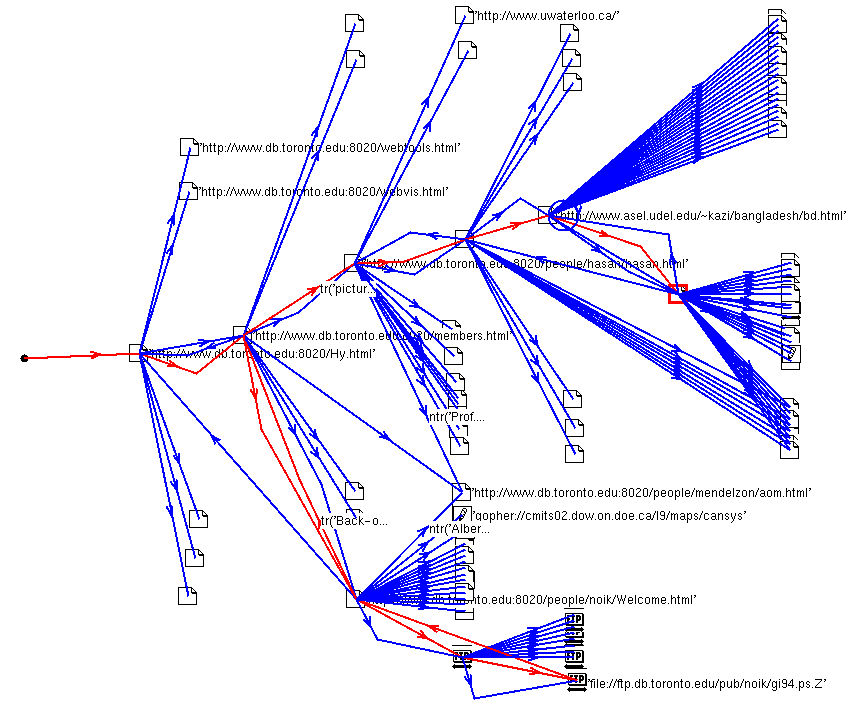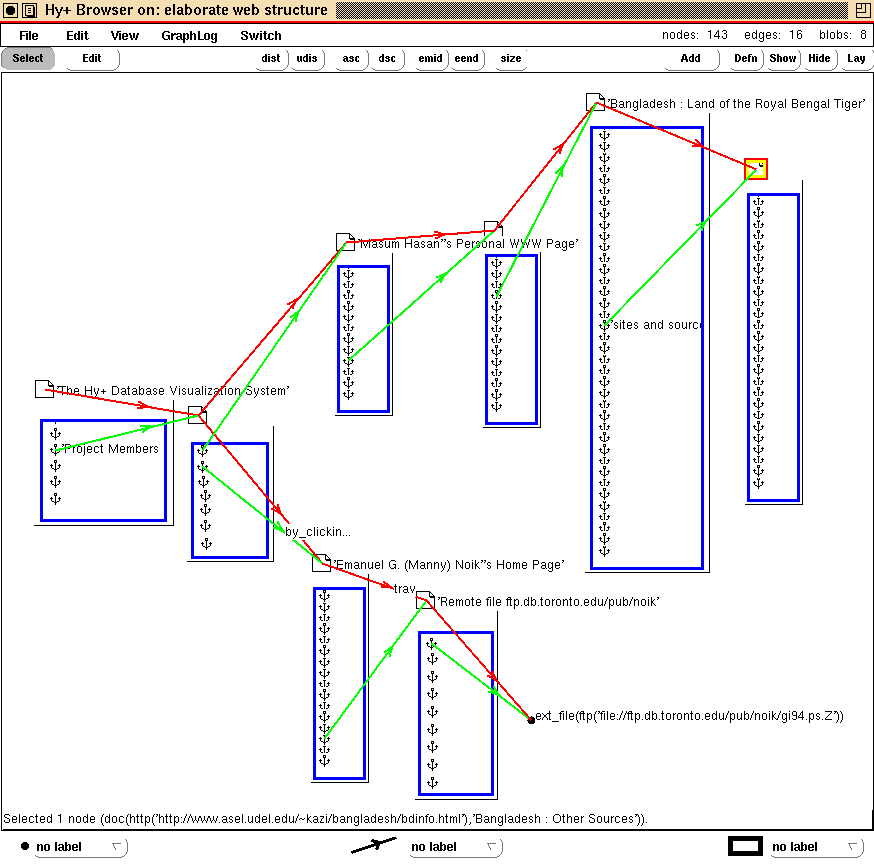
We are using Hy+ to visualize the portion of the web explored by a user during a Mosaic session. To do this, we interfaced Hy+ with a modified version of Mosaic 2.0. As the user browses, Mosaic communicates to Hy+ the URL of each document fetched as well as all the anchors contained in the document and the URL's where they point. Hy+ displays multiple hygraph visualizations of the sub-web seen so far. These visualizations are active: by clicking on a node in the hygraph, the user can make Mosaic jump to the URL associated with the node. Queries in the visual query language GraphLog can be issued at any time to query and reformat the visualizations.
The following figure shows one simple visualization produced by Hy+. In the figure there are two kinds of edges: blue ntr edges and red tr edges. A blue edge is created from a visited document at URL a to any document with URL b , if b is cited in an anchor within document a ; the label of the anchor is shown as the edge label, along with the type of edge (ntr).
A red edge is created from URL a to b , if b is visited immediately after a , either by clicking on an anchor inside a , or by clicking ``back'' or ``forward'', or by opening a new URL location while examining a .
The red edges (to some extent) correspond to the Mosaic history list. Mosaic does not keep any information corresponding to the blue edges.

Current client tools such as Mosaic or Netscape maintain linear history lists that a user can refer to in order to return to a previously visited document. Our history graph is more general and shows more structure than just a linear list of nodes visited. This contextual information can be useful in identifying previously visited nodes that the user wants to revisit. The browsing can be controlled from the visualization; clicking on a node causes Mosaic to jump to the associated document. The Graphlog query language can also be used to restrict the set of documents using very flexible criteria, including structural properties and regular expression matching on URL's, anchor labels, and document titles. Another advantage is that the user has easy access to a document whose URL is referenced in any previously visited document and can click on it directly, without having to fetch again the whole document that contains the anchor.
The next figure shows another view of a web browsing session. This uses the hygraph model supported by Hy+, where in addition to associating a node with another node by an edge, any node can be associated with one or more labeled sets of nodes by placing these sets in boxes (called blobs in Hy+ parlance). We use these boxes to represent html documents; the node at the top left corner of a box is labeled with the URL and title of the document, and each node inside a box represents an anchor (URL/label pair). A green edge labeled by_clicking is created from the anchor that was clicked to the document fetched as a result. The red traversal (tr) edges from the previous view are also presented in this one, except that edges produced by hitting the ``Back'' button are omitted. Boxes can be interactively collapsed to reduce cluttering.

Different icons can be assigned to nodes based on predefined criteria. For example, in the figure different icons are used for different Internet access methods (http, ftp, gopher, etc.).
It is possible to query the web graph database to filter out information of interest, such as ``display only the ftp nodes.'' It is also possible to perform string matching on anchor labels, document titles and URL's using regular expressions. The results of such a query can be used to cluster anchors/URLs inside a box. For example, we could cluster all URLs containing the string ``waterloo'' in a single box.